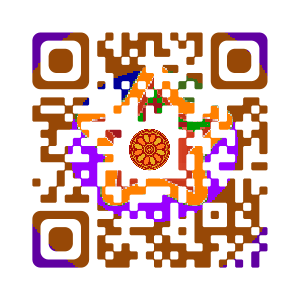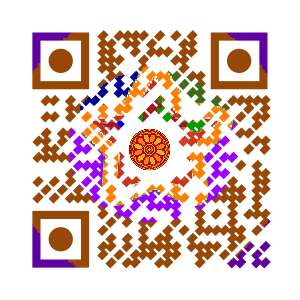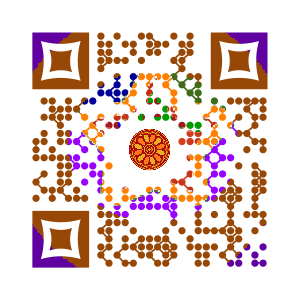- A Study on New Bypass Roadway Selection: Case Study of a Southern Part of Nakornratchsima Ring-Road, Thailand
 Sayumpo Intapiw (Department of Civil Engineering, Faculty of Engineering, Thammasat University, Pathumtani, THAILAND )
Deeboon Methakullachat, ( Department of Civil Engineering, Faculty of Engineering, Kasetsart University, Bang Khen, THAILAND ) Sayan Sirimontree, and Boonsap Witchayangkoon * (Department of Civil Engineering, Faculty of Engineering, Thammasat University, Pathumtani, THAILAND )
Sayumpo Intapiw (Department of Civil Engineering, Faculty of Engineering, Thammasat University, Pathumtani, THAILAND )
Deeboon Methakullachat, ( Department of Civil Engineering, Faculty of Engineering, Kasetsart University, Bang Khen, THAILAND ) Sayan Sirimontree, and Boonsap Witchayangkoon * (Department of Civil Engineering, Faculty of Engineering, Thammasat University, Pathumtani, THAILAND )
(Backup file)
doi: 10.14456/ITJEMAST.2017.1
Keywords: Google Earth(R); Remote Sensing; Highway and road selection; Transportation studies; Highway project; Bypass project.
Abstract
Remote sensing has been used as a tool to facilitate bypass road selection, in association with economic and engineering factors. This study focuses on a case study of Southern Part Nakornratchsima Ring-Road. Remote sensing image from Google Earth ® program is used in connection with the 1:50,000 base map. Road geometric design is considered for horizontal and vertical curves on each bypass road. Scoring system has been developed in order to assist the selection.
- Spatial Interpolation of Unconfined Compressive Strength for Soft Bangkok Clay Via Random Technique and Modified Inverse Distance Weight Method
 Thongchai Phothong (Department of Civil Engineering, Faculty of Engineering, Thammasat University, Pathumtani, THAILAND (current working at Department of Civil Engineering, Faculty of Engineering, King Mongkut's University of Technology Thonburi, THAILAND), Puttipol Dumrongchai, ( Department of Civil Engineering, Faculty of Engineering, Chiang Mai University, ChiangMai, THAILAND), Sayan Sirimontree, and Boonsap Witchayangkoon * (Department of Civil Engineering, Faculty of Engineering, Thammasat University, Pathumtani, THAILAND )
Thongchai Phothong (Department of Civil Engineering, Faculty of Engineering, Thammasat University, Pathumtani, THAILAND (current working at Department of Civil Engineering, Faculty of Engineering, King Mongkut's University of Technology Thonburi, THAILAND), Puttipol Dumrongchai, ( Department of Civil Engineering, Faculty of Engineering, Chiang Mai University, ChiangMai, THAILAND), Sayan Sirimontree, and Boonsap Witchayangkoon * (Department of Civil Engineering, Faculty of Engineering, Thammasat University, Pathumtani, THAILAND )
(Backup file)
doi: 10.14456/ITJEMAST.2017.2
Keywords: Soft Clay, Spatial Interpolation, Inverse Distance Weight, Random Technique, Anisotropy Angle, Geographic Modification.
Abstract
The basic of the inverses distance weight method has been improved by many researches. Not only power parameter but also sensitivity, anisotropy ratio, anisotropy angle and searching radius are incorporated to the model. In addition the cross validation processes is introduced to filter the best parameters for the observed data. To further develop, this study proposes a simple technique and a small modification of the IDW (modified IDW (mIDW)) function but increase ability to improve the estimation results. First, the random technique can be added in cross validation searching step to receive the possibly best parameters to better represent the natural phenomena of the interested areas. Second, with mIDW a coefficient of anisotropy angle parameter is modified to respond the anisotropy effect. The modified IDW is added a coefficient call geographic modification, to reflect the anisotropy angle parameter. This study uses 164 bore holes with 23 layers data for Bangkok to test the model. This study evaluates four models: IDW, Tomczak IDW (Tomczak, 1998), mIDW, and Cubic Spline. With the random technique the observed data patterns that are feed to the searching parameters step reveal the best parameters to imitate the natural phenomena of the area. This study finds mIDW model is better than IDW, Tomczak IDW, and Cubic Spline. The root means square errors of the study case decreases numerously from the worst random to best random case by 11 %.
- Shear Strength Test of Joint with Different Geometric Shapes of Shear Keys between Segments of Precast Segmental Bridge
 Anurak Sangkhon, Chaisak Pisitpaibool * (Department of Civil Engineering, Faculty of Engineering, Thammasat University, Pathumtani, THAILAND )
Anurak Sangkhon, Chaisak Pisitpaibool * (Department of Civil Engineering, Faculty of Engineering, Thammasat University, Pathumtani, THAILAND )
(Backup file)
doi: 10.14456/ITJEMAST.2017.3
Keywords: Single shear key; Multiple shear key; Three shear key; Crack pattern; Trapezoidal shear key; Triangle shear key; Semi-circle shear key.
.
Abstract
Joints of each segment of a precast concrete segmental bridge are important. A joint is used to transfer internal shear forces in order to increase strength of the structure. A good segmental joint should be a simple shape, cheap cost to set its formwork, and save time for installation. The purpose of this research was to study the capacity of joint with shear-keys that simulated a web segment of a segmental concrete bridge. Three geometric shapes of shear keys were triangle, semi-circle, and trapezoid included sides of 45 degrees. Each sample contained three web panels, which were prestressed together. Two magnitudes of stresses from prestressing forces were taken into account, 0.833-MPa and 1.267-MPa. The shear keys were divided into two types, single and multiple keys (three keys). The results showed that capacity of the joints with trapezoidal were sensitive comparing with the other shapes. Shear strengths of the trapezoidal were significant improved when the number of key and magnitude of prestressing force were increased. With the higher stress (1.267-MPa) and maximum number of shear key (3-key), all of them provided the equivalent ultimate shear strength. However, the triangle and the semi-circle presented the local cracks that might cause a brittle failure at the shear key.
- GPS-based Driving Observations of Personal Vehicles in Bangkok
 Kritsada Anantakarn (Department of Civil Engineering, Faculty of Engineering, Thammasat University, Pathumtani, THAILAND )
Deeboon Methakullachat, ( Department of Civil Engineering, Faculty of Engineering, Kasetsart University, Bang Khen, THAILAND ),
Saharat Buddhawanna ( Department of Civil Engineering, Faculty of Engineering, Thammasat University, Pathumtani, THAILAND ),
Sanya Namee ( Department of Disaster Prevention and Mitigation, Ministry of Interior, THAILAND ),
Chattichai Waisurasingha ( Department of Civil Engineering, Faculty of Engineering, Khon Kaen University, Khon Kaen, THAILAND )
, and Boonsap Witchayangkoon * (Department of Civil Engineering, Faculty of Engineering, Thammasat University, Pathumtani, THAILAND )
Kritsada Anantakarn (Department of Civil Engineering, Faculty of Engineering, Thammasat University, Pathumtani, THAILAND )
Deeboon Methakullachat, ( Department of Civil Engineering, Faculty of Engineering, Kasetsart University, Bang Khen, THAILAND ),
Saharat Buddhawanna ( Department of Civil Engineering, Faculty of Engineering, Thammasat University, Pathumtani, THAILAND ),
Sanya Namee ( Department of Disaster Prevention and Mitigation, Ministry of Interior, THAILAND ),
Chattichai Waisurasingha ( Department of Civil Engineering, Faculty of Engineering, Khon Kaen University, Khon Kaen, THAILAND )
, and Boonsap Witchayangkoon * (Department of Civil Engineering, Faculty of Engineering, Thammasat University, Pathumtani, THAILAND )
(Backup file)
doi: 10.14456/ITJEMAST.2017.4
Keywords: Global Positioning System; MANOVA; Multiple regression models; Driving behaviors; Driving experience; Fuel type
.
Abstract
GPS receivers/loggers were installed in personal vehicles to collect driving information around Bangkok areas, Thailand, during 2015-2016. During the experiment, there are 30-32 operational GPS satellites with visible 3-13 satellites were in the sky over the observed point. This study took five degrees GPS elevation mask angle. Total sample of 267 vehicles, 1869 days 3965 trips, data were transferred into a GIS database for visualization and analysis. Participants and vehicles basic information were also collected, including driver gender, vehicle fuel type, size of total volume of all engine cylinders, driver age, and driving experience. Collected data were statistically explored with the SPSS (MANOVA) with fuel types, all cylinder volumes, driving experiences, and driver age as independent variables and distance, average speed, and time as dependent variables. This study found that fuel types, driver experiences, car engine cylinder volumes, and driver age have statistically significant influence on driving behaviors that were related to distance, average speed and driving time. Multiple regression models were produced to predict driving behaviors pertinent to distance, average speed and driving time.
- Improvement of Electrolytic Etching on Stainless Steel Grade SUS 304
 Apiwat Muttamara* , Natta Naulpring (Department of Industrial Engineering, Faculty of Engineering, Thammasat University, Pathumtani, THAILAND )
and Somsak Siwadamrongpong ( Manufacturing Engineering, Faculty of Engineering, Suranaree University of Technology, Nakhon Ratchasima, THAILAND )
Apiwat Muttamara* , Natta Naulpring (Department of Industrial Engineering, Faculty of Engineering, Thammasat University, Pathumtani, THAILAND )
and Somsak Siwadamrongpong ( Manufacturing Engineering, Faculty of Engineering, Suranaree University of Technology, Nakhon Ratchasima, THAILAND )
(Backup file)
doi: 10.14456/ITJEMAST.2017.5
Keywords: Scanning electron microscopy; material removal rate; electrolyte lifetime; etching process; bio-medical devices; electrolysis time; stainless tube; workpiece; ANOVA.
Abstract
The objective of this study is to improve production rate for bio-medical devices stainless tube. In particular, attention is focused on parameters of the electro-etching procedure into the manufacturing process for stainless wire. The wire is used for angiography or arteriography that is a medical imaging technique used to visualize the inside, or lumen, of blood vessels and organs of the body, with particular interest in the arteries, veins, and the heart chambers, so quality of work is important. Electrolytic etching is technique which gives fine, bright and stress-free surface. This paper reports the findings of an experimental investigation on Electrolytic etching of SUS304 stainless steel. In this investigation, effect of process parameters on performance measure as diameter reduction rate was studied. The process parameters which were chosen were: current (A) and electrolysis time (min.). The relation between current and material removal was proposed. The results and the significance of controlling parameters were analyzed using analysis of variance (ANOVA). It was found that current is a significant parameter. The electrolysis time and the number of workpiece for each lot sizes were investigated.



 Sayumpo Intapiw (Department of Civil Engineering, Faculty of Engineering, Thammasat University, Pathumtani, THAILAND )
Deeboon Methakullachat, ( Department of Civil Engineering, Faculty of Engineering, Kasetsart University, Bang Khen, THAILAND ) Sayan Sirimontree, and Boonsap Witchayangkoon * (Department of Civil Engineering, Faculty of Engineering, Thammasat University, Pathumtani, THAILAND )
Sayumpo Intapiw (Department of Civil Engineering, Faculty of Engineering, Thammasat University, Pathumtani, THAILAND )
Deeboon Methakullachat, ( Department of Civil Engineering, Faculty of Engineering, Kasetsart University, Bang Khen, THAILAND ) Sayan Sirimontree, and Boonsap Witchayangkoon * (Department of Civil Engineering, Faculty of Engineering, Thammasat University, Pathumtani, THAILAND )
 Thongchai Phothong (Department of Civil Engineering, Faculty of Engineering, Thammasat University, Pathumtani, THAILAND (current working at Department of Civil Engineering, Faculty of Engineering, King Mongkut's University of Technology Thonburi, THAILAND), Puttipol Dumrongchai, ( Department of Civil Engineering, Faculty of Engineering, Chiang Mai University, ChiangMai, THAILAND), Sayan Sirimontree, and Boonsap Witchayangkoon * (Department of Civil Engineering, Faculty of Engineering, Thammasat University, Pathumtani, THAILAND )
Thongchai Phothong (Department of Civil Engineering, Faculty of Engineering, Thammasat University, Pathumtani, THAILAND (current working at Department of Civil Engineering, Faculty of Engineering, King Mongkut's University of Technology Thonburi, THAILAND), Puttipol Dumrongchai, ( Department of Civil Engineering, Faculty of Engineering, Chiang Mai University, ChiangMai, THAILAND), Sayan Sirimontree, and Boonsap Witchayangkoon * (Department of Civil Engineering, Faculty of Engineering, Thammasat University, Pathumtani, THAILAND )
 Anurak Sangkhon, Chaisak Pisitpaibool * (Department of Civil Engineering, Faculty of Engineering, Thammasat University, Pathumtani, THAILAND )
Anurak Sangkhon, Chaisak Pisitpaibool * (Department of Civil Engineering, Faculty of Engineering, Thammasat University, Pathumtani, THAILAND )
 Kritsada Anantakarn (Department of Civil Engineering, Faculty of Engineering, Thammasat University, Pathumtani, THAILAND )
Deeboon Methakullachat, ( Department of Civil Engineering, Faculty of Engineering, Kasetsart University, Bang Khen, THAILAND ),
Saharat Buddhawanna ( Department of Civil Engineering, Faculty of Engineering, Thammasat University, Pathumtani, THAILAND ),
Sanya Namee ( Department of Disaster Prevention and Mitigation, Ministry of Interior, THAILAND ),
Chattichai Waisurasingha ( Department of Civil Engineering, Faculty of Engineering, Khon Kaen University, Khon Kaen, THAILAND )
, and Boonsap Witchayangkoon * (Department of Civil Engineering, Faculty of Engineering, Thammasat University, Pathumtani, THAILAND )
Kritsada Anantakarn (Department of Civil Engineering, Faculty of Engineering, Thammasat University, Pathumtani, THAILAND )
Deeboon Methakullachat, ( Department of Civil Engineering, Faculty of Engineering, Kasetsart University, Bang Khen, THAILAND ),
Saharat Buddhawanna ( Department of Civil Engineering, Faculty of Engineering, Thammasat University, Pathumtani, THAILAND ),
Sanya Namee ( Department of Disaster Prevention and Mitigation, Ministry of Interior, THAILAND ),
Chattichai Waisurasingha ( Department of Civil Engineering, Faculty of Engineering, Khon Kaen University, Khon Kaen, THAILAND )
, and Boonsap Witchayangkoon * (Department of Civil Engineering, Faculty of Engineering, Thammasat University, Pathumtani, THAILAND )
 Apiwat Muttamara* , Natta Naulpring (Department of Industrial Engineering, Faculty of Engineering, Thammasat University, Pathumtani, THAILAND )
and Somsak Siwadamrongpong ( Manufacturing Engineering, Faculty of Engineering, Suranaree University of Technology, Nakhon Ratchasima, THAILAND )
Apiwat Muttamara* , Natta Naulpring (Department of Industrial Engineering, Faculty of Engineering, Thammasat University, Pathumtani, THAILAND )
and Somsak Siwadamrongpong ( Manufacturing Engineering, Faculty of Engineering, Suranaree University of Technology, Nakhon Ratchasima, THAILAND )